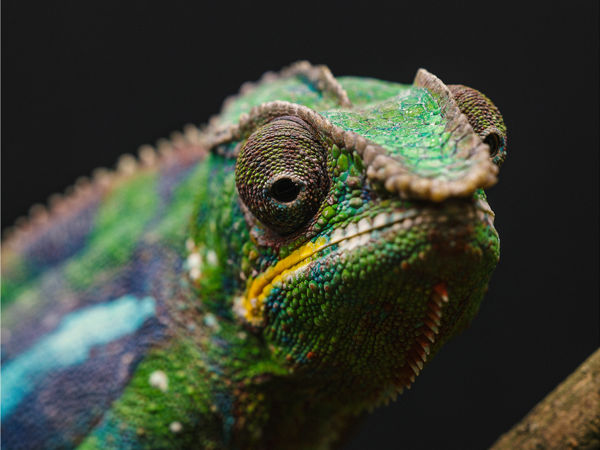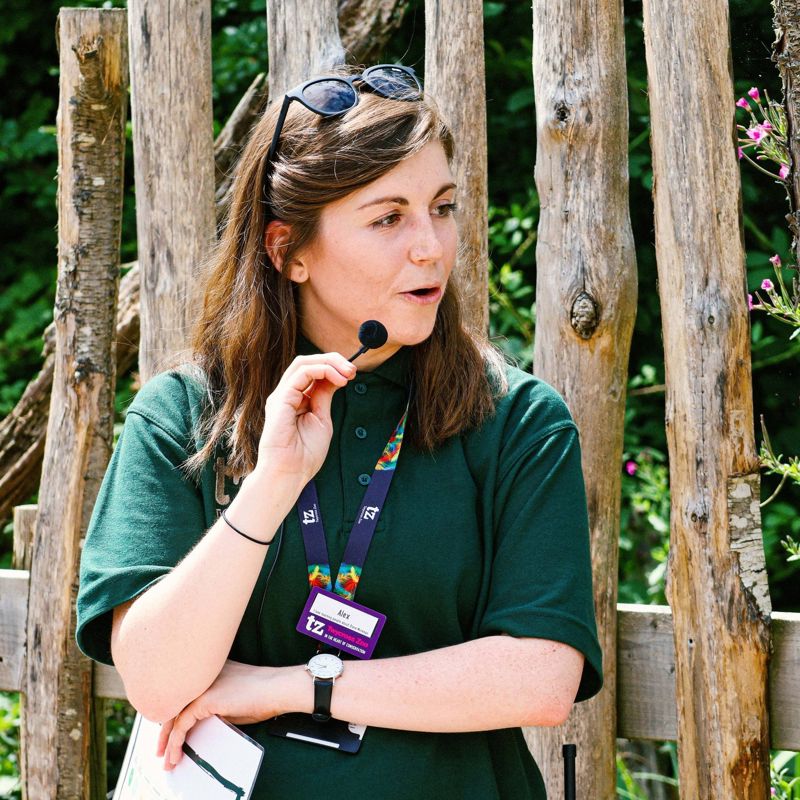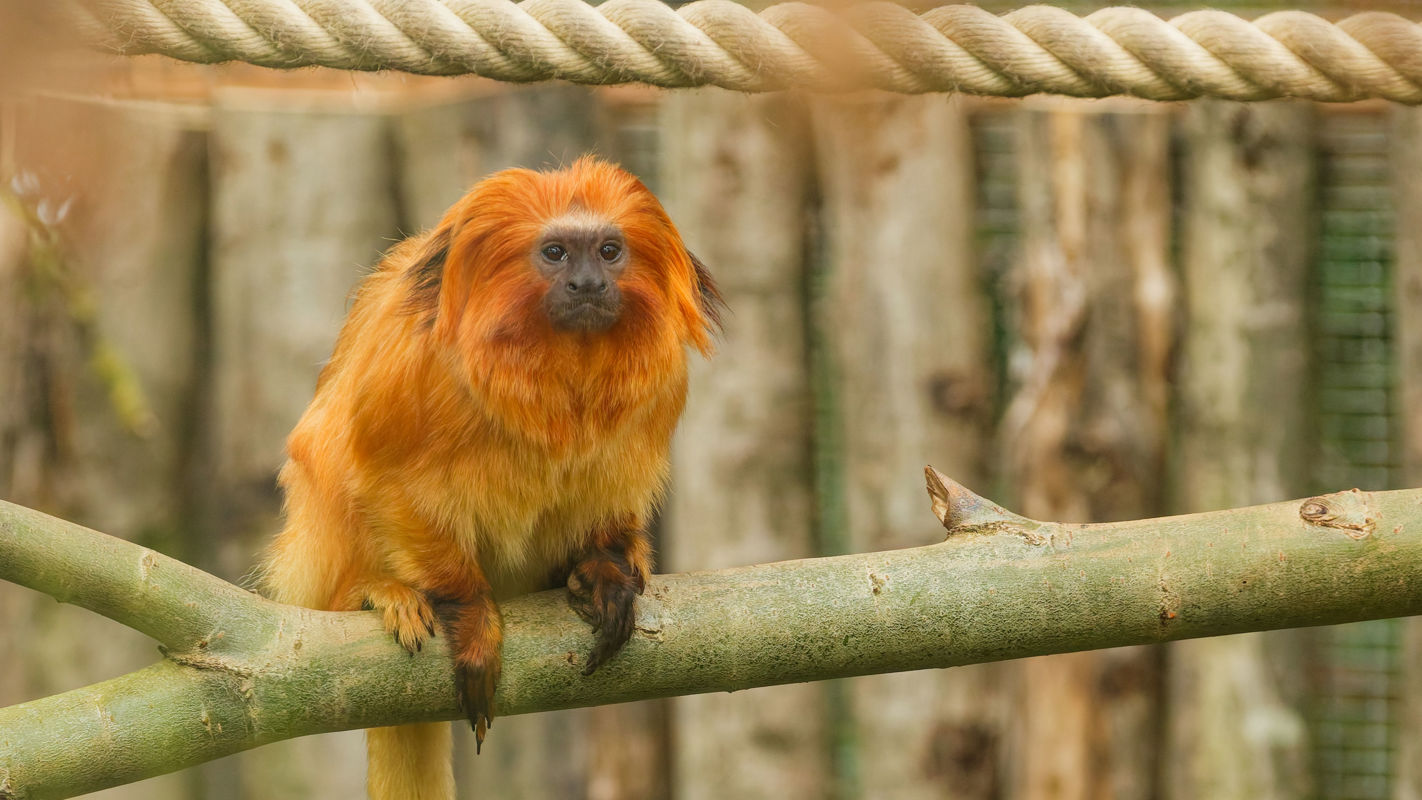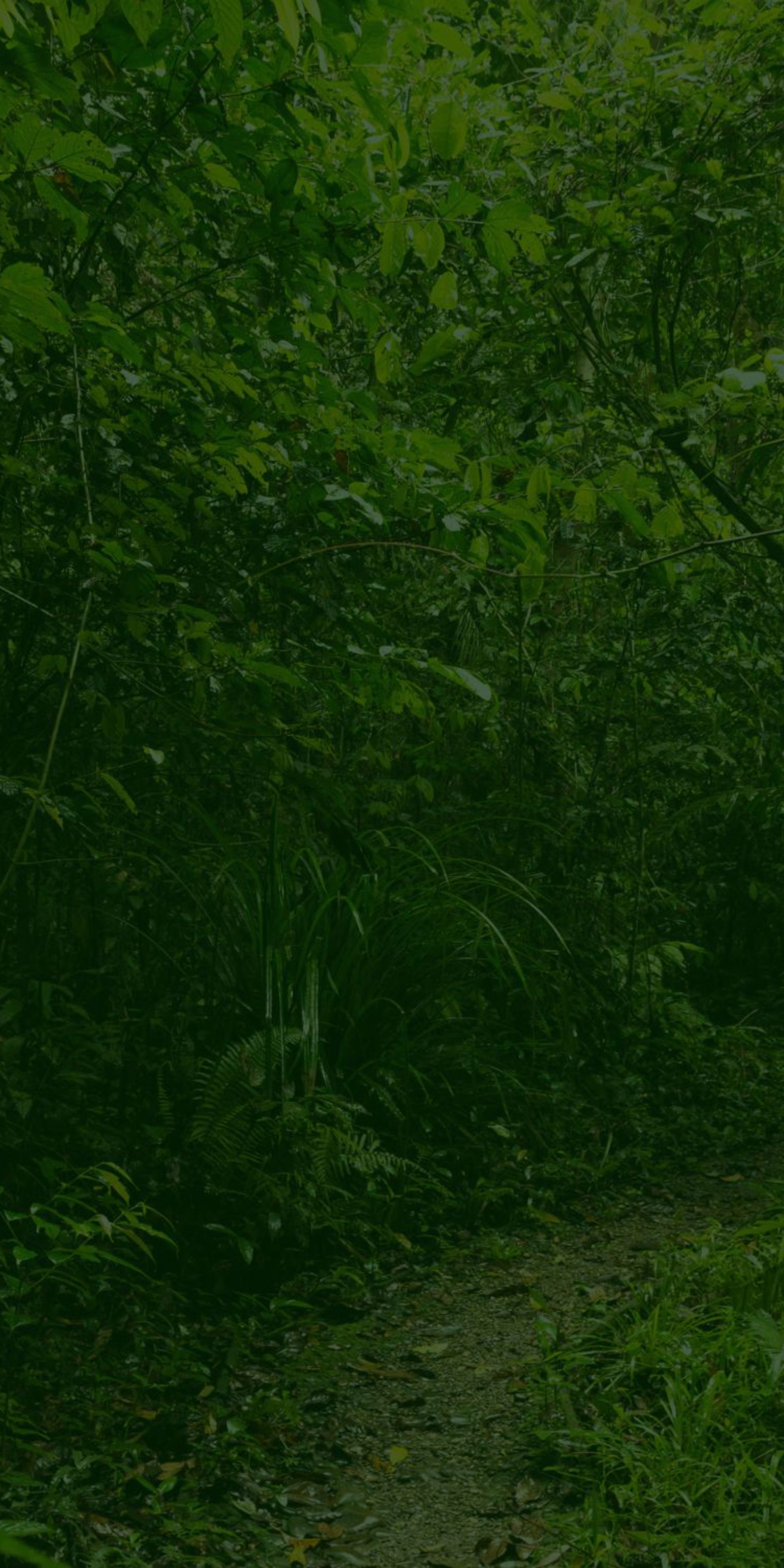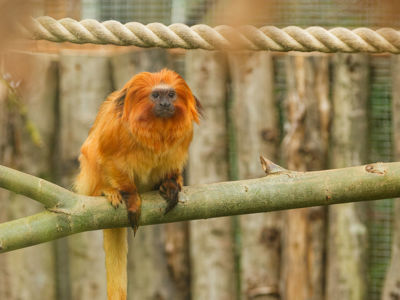
Golden Lion Tamarin
Key Facts:
Scientific name: Leontopithicus rosalia
Range: Southeastern coast of Brazil
Habitat: Atlantic coastal forests
Diet: Omnivorous
Average size: 6—10 inches (15 to 25 centimeters) with a tail averaging 12—15 inches (32 to 40 centimeters)
Life span: Eight years in the wild, up to 20 years in captivity
IUCN Red List: Endangered
Golden lion tamarins are Endangered primates from the Atlantic forests of Rio de Janeiro, Brazil. As suggested by their name, a fiery orange mane resembling that of a lion’s encircles their expressive, hairless face. They stand at around 10 inches tall (about as tall as the height of three portrait playing cards) and their lightweight frame works in their favour in combination with their tail which is longer than their total body length. These features help them to leap, climb and balance through their forested surroundings with ease.
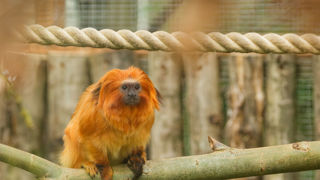
Unusually, the Callitrichidae family that tamarins belong to are unique groups of primates who typically give birth to twins rather than single young. 78% of wild golden lion tamarin births are twins, with this reproductive quirk shaping the social structure of their family life. Looking after multiple babies at once can be physically demanding, so golden lion tamarins partake in alloparenting. This is a method of raising young with the help of non-parental family members in the form of carrying the babies between feeds and sharing solid foods with them after their 90-day weaning period.
Golden lion tamarins appear on Brazilian bank notes and postage stamps, highlighting their significance within Brazilian habitats and the need to protect ecologically significant areas such as the Atlantic Forest where they live.
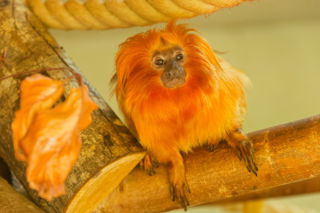
Here at Twycross Zoo we house one troop (group) of golden lion tamarins.
As omnivores (plant and meat-eaters) with a diet including a variety of fruits, golden lion tamarins are excellent seed dispersers, spreading seeds in their feces throughout their forested habitats. This behaviour contributes to the regeneration of surrounding forests and ensures the sustainability (continued availability) of resources such as food and shelter for themselves and other species sharing their range to access in the future. Golden lion tamarins are also regenerating a forest that provides clean drinking water and clean air to surrounding communities, so protecting this significant species benefits both people and the planet
Golden lion tamarins sleep from dawn until dusk, often settling in tree holes to protect themselves from the elements and potential predators. For this reason, it’s very important that this species has access to sufficient tree cover for shelter.
Golden lion tamarins are Endangered according to the IUCN Red List, meaning they are at substantial risk of extinction. This is due to:
Habitat fragmentation: golden lion tamarins currently exist within 2% of their original range because lots of their habitat has been removed to clear space for the production of timber, cattle, agriculture and urban developments. When large areas of an animal’s habitat are cleared, this causes fragmentation – (the separation of suitable habitat), which contributes to their population decline. This is because when a species is heavily separated, their ability to create healthy populations from smaller, more secluded groups is reduced
Illegal pet trade: since the 17th Century, golden lion tamarins have been considered a popular pet due to their striking and recognisable appearance, and in more recent years, their illegal export for the pet trade has significantly contributed to their population decline.
Yellow fever outbreaks: in 2018, an outbreak of yellow fever (a mosquito-borne disease) was thought to have reduced golden lion tamarin populations by around 32% in just one year, highlighting the fragility of smaller populations in the face of disease. With many humans also testing positive for the disease during the same time-period, this highlights the importance of ensuring that non-human primates remain separated from humans to reduce the transmission (spread) of diseases like yellow fever.
-
![362277039 664600909026309 8369226469419348221 N]()
What we're doing...
EEP: Our golden lion tamarins are part of an EEP (EAZA Ex-situ Programme) for population management. The aims of this EEP are to maintain healthy populations of golden lion tamarins whilst fulfilling the conservation requirements of that species. The priorities of the golden lion tamarin EEP are not only to breed this species to increase the diversity (genetic variety) of their zoo-based populations.
Education: educating our visitors about golden lion tamarins allows us to discuss the threats they face and raise awareness for the broader issue of changing landscapes to produce materials at the expense of surrounding wildlife, and to gain a deeper understanding of the contributing factors as to why these types of decisions are made.
-
![Golden Lion Tamarin 3]()
How you can help?
Twycross Zoo is a conservation charity so by choosing to support us, the money you’ve spent on your tickets will be used to care for Endangered species such as the golden lion tamarins (and many more Endangered and Critically Endangered species that we house). Golden lion tamarin populations have drastically improved in recent years because of the collaborative efforts of ex-situ and in-situconservation programmes, so by visiting Twycross Zoo, you’ve participated in conservation too!
